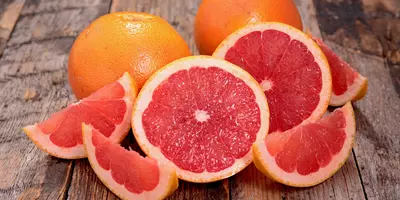Tinned Dog Food: Pros and Cons
- 21 Dec 2019
- 7m read

The History of Tinned Dog Food
Canned food has come a long way since its main component was horsemeat. Shudder. It was popularised after World War I when there was a surplus of horses leftover. During World War II tin and meat rations meant that dog food came under fire and new alternative food sources had to be explored. This paved the way for many of the types of food we see today.
Advantages of Tinned Dog Food
Inexpensive
Because of how mass-produced tinned dog food is, it can be sold at a relatively low price and still maintain profit margins. The ingredients tend to be of lower quality too, which enables a cheaper purchase price.
Convenient
Thanks to 24/7 supermarkets there’s unlikely to be a moment in the day that you don’t have access to dog food, should you find yourself in a pooch-related emergency. Tinned dog food is readily available in most, if not all grocery shops.
The slightly sadder side of the story is that tinned dog food is often found in the household items aisle, next to bleach and toilet rolls. We like to think our pooches are worthy more than that. They are of course pre-prepared, meaning dinner time is merely a case of decanting the tin into the bowl and allowing your pup to dig in.
Long shelf life
The long shelf life of tinned dog food means that it can be bought in bulk and kept stored away for months, if not years. Which poses the question, what on earth do they put in there?
Disadvantages of Tinned Dog Food
Low nutrient density
In order to keep prices low, a lot of tinned dog food manufacturers bulk-out their products with ‘fillers’. These are typically ingredients of lower nutritional value, such as corn, rather than ingredients with high nutritional value, such as lentils. Tinned dog food also has a very high water content which might be hydrating for your pooch but again, is simply another way to add density.
Every dog is different. While some go wild chasing balls in the park, others prefer a relaxed stroll (with the occasional sniff-stop). They might be the same size, but they're burning through different amounts of calories. Because canned dog foods are mass-produced, the feeding instructions are "one size fits all". Even if you follow the guidelines, there's a good chance you might be feeding your dog too much, or too little.
Preservatives
Whilst a long shelf life might be an incentive of tinned dog food, the process behind preserving the food is less appealing.
According to All About Dog Food, BHA, BHT, propyl gallate and potassium sorbate are some of the most commonly used artificial preservatives and antioxidants. There is speculation that these have been linked to behavioural issues and tumour formation. Yikes.
To avoid explicitly stating that they use these compounds, dog food manufacturers will instead include ‘EU-permitted antioxidants’ in their ingredient lists.
Transparency is key when it comes to labels, so it’s best to err on the side of caution if you see vague references to ingredients. Chances are they could be hiding something, but not in a cute way, like when your dog stuffs their treats down the sofa.
Digestion issues
We know it's a bit rude to discuss poop during a chat about what to serve at dinner time. But, considering what comes out of your dog's back end depends on what goes in at the front, we'd be missing a trick if we didn't.
Canned dog food is often bulked up with extra water and thickeners, which can result in sloppy, questionable poos. And a lot of eye-watering, stinky farts…emergency exit this way.
Plaque buildup
Due to its soft and sticky texture, tinned dog food can cause plaque to form on your dog’s teeth. If you're feeding your dog a tinned food diet, it is important that you schedule regular trips to the Vet to check up on your pooch’s dental health. If left untreated, the buildup can contribute to long-term tooth and gum decay.
Other Types of Dog Food
Dry
Dry dog food, sometimes referred to as kibble, is made through a process called extrusion, which basically takes raw ingredients and cooks them at extremely high temperatures. The product is then cut into shapes, dried out with hot air, cooled and coated in oils to boost flavour. And… breathe.
That’s a lot of effort to produce some unappealing brown balls. Cooking at such high temperatures is likely to strip a large portion of the beneficial nutrients away too, thumbs down from us.
Raw
Raw dog food is, as you would expect, raw meat (bones included) combined with things like raw eggs, fruit, vegetables and dairy products. Known as the BARF (biologically approved raw food’ diet, it is the closest your pooch will get to the diet of their canine ancestors. For this reason, there are many advocates for the diet.
However, the drawback of a raw diet is that there is a huge risk of bacterial contamination. When handling and serving raw food you must exercise extreme caution to prevent the introduction of this bacteria into your home, especially in households with small children. It is also generally recommended that you avoid feeding raw food to pooches with sensitive stomachs, including puppies and dogs with pancreatitis.
Fresh (the best alternative)
Step aside, tins – there's a new dog food in town. While canned food has been filling pets' tummies since the 1930s, freshly cooked is quickly becoming the most popular dog food category. The idea behind fresh is that it is produced in a similar way to how you would cook at home, without actually having to cook it at home, thanks to fresh pet food suppliers, such as us.
Fresh food preparation involves taking quality, raw ingredients and gently cooking them to kill off any unwanted bacteria but retain vital nutrients. There's no heavy processing and no artificial ingredients or pointless fillers are added. The food can be preserved for longer by being placed in the freezer.
Butternut Box vs Tinned Food
Butternut Box meals are made from freshly prepared ingredients, just like you'd find in your local supermarket or health-food store. Our recipe lists are short, easy to read and packed with goodies. Working hand-in-hand with our team of nutritionists, we have produced 10 recipes, which tick all of the boxes.
So our Tuck in Chicken recipe, for example, is all about the chicken, with some tasty herbs and vegetables added for extra nutrients. Get ready to join the clean-bowl club.
With tinned dog food, it's a lot harder to work out exactly what's in it – even if you read the label. It's not unusual for the meat to come from a variety of species. Surprisingly, only 4% of it needs to be the meat that's on the label, so the tin of food "with beef" might not be as beefy as you think. Which really gives you paws for thought (sorry).
Our meals are also gently cooked and free from tummy-upsetting ingredients, so they're a lot easier on your dog's digestion.
Every portion is weighed out especially for your pooch. We ask you a few questions about your pooch, such as their breed, activity, age and more, so we know exactly how much to put in each pouch. This makes it so much easier to keep your dog at a healthy weight, and you know they're getting all the nourishment they need.
Instead of giving you the "what do you call that" look, they'll be drooling before you even get the pouch open.
Click the Build Your Box button below to get an exact plan and price.

.webp)


